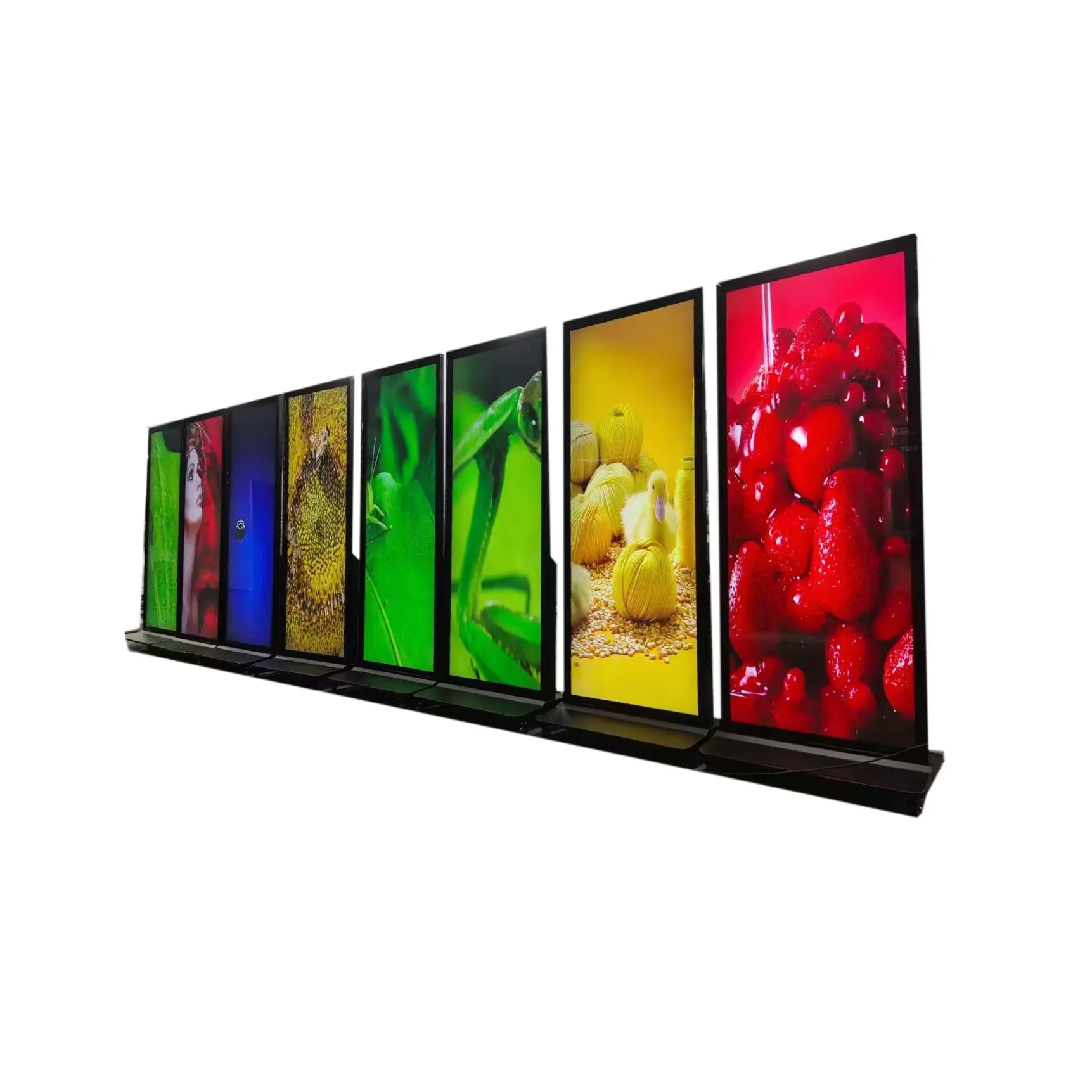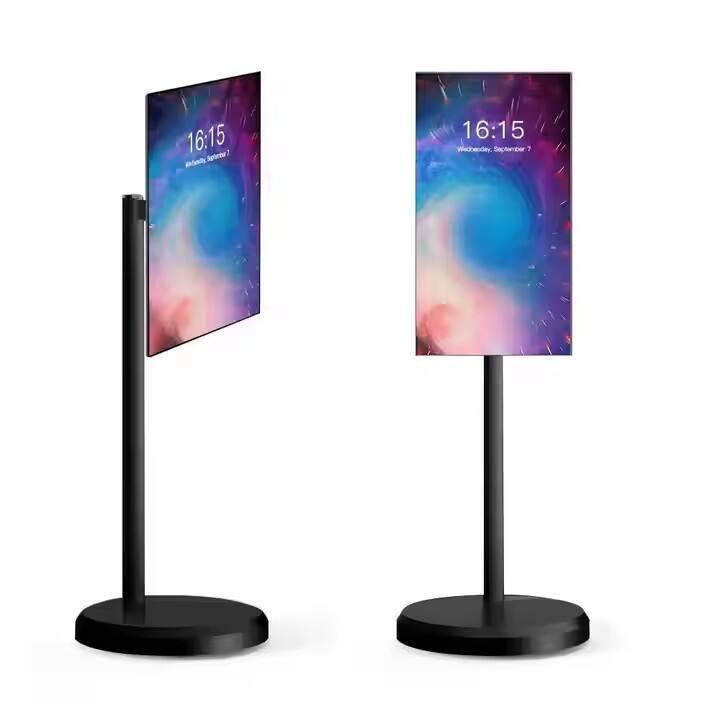Unlocking the strategic value of digital signage
Digital Signage is reshaping how restaurants communicate, operate, and sell. Far from being mere screens, digital signage systems now connect with POS data, reservation platforms, inventory feeds, and customer profiles to deliver context-aware messages that influence behavior in real time. From quick-service counters to fine-dining terraces, digital signage improves speed of service, increases average check, supports staff workflows, and elevates guest experience. The right digital signage deployment reduces friction at decision points (ordering, waiting, seating), amplifies promos that matter to the moment, and frees staff to focus on hospitality instead of routine updates. In short, digital signage transforms physical surfaces into intelligent touchpoints that support revenue, efficiency, and brand expression without intruding on the dining atmosphere.
Menu management and revenue optimization
Dynamic menu displays that respond to context
Digital Signage excels at showing menu items that change by time of day, ingredient availability, or demand. Breakfast, lunch, and dinner menus can appear automatically, while limited-time offers or sold-out items are removed instantly. This reduces the need for printed menus and keeps messaging consistent across locations.
Real-time pricing and demand-based promotions
With integrations into POS and inventory systems, digital signage enables dynamic pricing and targeted promotions. For example, a lunch rush special can be highlighted during slow afternoon hours, or an overstocked side can be promoted at a discount to improve margin. That agility supports revenue optimization without manual intervention.
Visual merchandising for higher average check
High-impact digital visuals, short motion clips, and suggestive upsell prompts on digital signage drive impulse purchases. Strategic placement near order points increases add-on sales—pairings, desserts, and drinks—by nudging customers at the exact decision moment.

Order processing and queue management
Order confirmation and kitchen display coordination
Digital Signage integrated with kitchen display systems shows order status, estimated wait times, and the next-batch preparation windows. Guests see confirmations on front-of-house screens while back-of-house teams get clear production queues, reducing mistakes and smoothing throughput.
Digital queueing and table-ready alerts
When seating or pickup is busy, digital signage can display estimated times, table numbers, and SMS or app-based alerts. This reduces crowding, improves perceived wait experience, and lets staff manage flow without constant manual calls.
Multi-location order routing for delivery and pickup
For restaurants with multiple service lanes or ghost-kitchen arrangements, digital signage helps route pickup instructions, clear lane assignments, and time windows—minimizing confusion and speeding delivery drivers through streamlined pickup flows.
Guest experience and personalization
Welcome and wayfinding displays that orient guests
Digital Signage at entrances or concourses provides arrival information, reservation check-in prompts, and simple wayfinding to patios or private dining rooms. Clear directional messaging reduces friction and improves the first impression.
Personalized offers and loyalty integration
When linked with loyalty programs, digital signage can display personalized greetings, targeted discounts, or recommended items based on past orders. Personalization on digital signage increases relevance and encourages repeat visits by making guests feel recognized.
Entertainment and ambiance control through visual programming
Digital Signage contributes to mood setting—dayparted imagery, curated music visuals, or real-time sports feeds in designated areas. Programmed scenes maintain brand consistency while adapting to event nights, private bookings, or family-friendly hours.
Marketing, promotions, and brand storytelling
Campaign orchestration across venues and channels
Digital Signage lets marketing teams push consistent campaigns across in-store screens, window displays, and drive-thru boards. Centralized content management ensures brand voice and timing are coordinated, and makes it easy to run cross-channel promotions that sync with social media and email.
Product storytelling and ingredient transparency
Use digital signage to tell the origin story of a dish, highlight sustainability efforts, or show short clips of menu creation. These narratives increase perceived value and help justify premium pricing for craft or locally sourced items.
Event promotion and experiential activations
Restaurants can use digital signage to announce live music, tasting menus, or seasonal festivals. Interactive displays can invite guest participation, RSVP, or signups for mailing lists—turning the restaurant into a hub for community engagement.
Operational efficiency and staff communication
Back-of-house alerts and safety messaging
Digital Signage is useful for internal communications: health and safety reminders, cleaning schedules, and critical alerts can be routed to staff-only displays. Clear on-screen instructions reduce errors and keep teams aligned, especially during shift changes.
Training and SOP reinforcement through micro-learning
Short training clips and visual checklists shown on staff-facing digital signage help new hires quickly learn station routines and portion sizes. Reinforcing SOPs visually increases consistency without pulling staff from service for long classroom sessions.
Shift planning and performance dashboards
Manager-facing digital signage can display live sales metrics, labor targets, and guest satisfaction scores. These dashboards help teams react faster to demand and adjust staffing or promotions on the fly.
Drive-thru, kiosk, and self-service enhancements
High-visibility drive-thru menus with dynamic content
Digital Signage at drive-thru lanes allows for real-time menu updates and daypart switching that adapt to external lighting and weather. High-contrast content and motion-led suggestions help speed decisions without slowing the lane.
Self-order kiosks and contactless ordering surfaces
Kiosk digital signage presents modular, intuitive order flows that reduce ordering errors and increase average ticket size. Combined with mobile ordering, kiosks serve high-intent customers while freeing staff to focus on fulfillment and hospitality.
Cross-sell prompts and nutrition transparency at the point of choice
Digital Signage can present side suggestions, nutrition facts, and allergen warnings precisely when a guest is customizing an item. Clear, concise displays reduce anxiety around choices and build trust through transparency.
Data and analytics for continuous improvement
Measuring campaign effectiveness and content A/B testing
Digital Signage platforms offer analytics on impressions, dwell time, and content engagement. Marketers can A/B test visuals, call-to-actions, and video lengths to refine messaging for conversion and average order impact.
Sales attribution and inventory-driven optimization
By correlating content plays with POS lift, operators understand which digital campaigns drove specific sales spikes. Tie-ins to inventory data allow content to automatically promote available items and prevent wasted impressions on sold-out dishes.
Heatmapping and footfall analytics for space planning
Advanced digital signage ecosystems can integrate with people-counting sensors to show which areas attract attention. This data informs seating layouts, promotional placements, and staffing during peak windows.
Design, hardware, and deployment considerations
Screen type, brightness, and ambient light adaptation
Choose display technologies—indoor LCD, high-brightness LED, or transparent OLED—based on placement and lighting. Adaptive brightness and anti-glare coatings ensure legibility without overwhelming the dining atmosphere.
Content scheduling and localization at scale
A robust content management system lets teams schedule dayparts, localized menus, and language variants across multiple stores. Templates and permissioned workflows speed rollout and ensure brand control while giving local managers some flexibility.
Reliability, maintenance, and service-level planning
Digital Signage hardware should include remote health monitoring and quick-replace modules to minimize downtime. Establish SLAs with vendors for fast part swaps and remote troubleshooting to keep screens on message.
Compliance, accessibility, and inclusivity
Accessibility features and readable design
Design digital signage with clear typography, sufficient contrast, and adjustable font sizes. Include closed captions for video content and ensure touch surfaces are reachable for wheelchair users to comply with accessibility standards.
Regulatory messaging and allergen disclosures
Restaurants can use digital signage to display legally required allergen information or mandated disclaimers in a clear, timely manner. Central control of compliance messaging reduces risk and standardizes legal notices across locations.
Future directions and AI-driven experiences
Contextual, AI-driven content personalization
As AI models and computer vision integrate with digital signage, content will adapt to real-world cues—time of day, weather, queue length, and demographic signals—to serve the most relevant offers. These intelligent systems increase conversion while minimizing manual updates.
Voice-enabled and multimodal ordering flows
Combining voice, touch, and gesture with digital signage creates more accessible ordering paths. Voice-activated suggestions and conversational menus on digital signage reduce friction for users who prefer hands-free interactions.
FAQ
How to pick the right digital signage solution for my restaurant
Evaluate use cases first (menu, drive-thru, in-dining entertainment), then select a platform with POS and inventory integrations, robust CMS features, remote health monitoring, and local support. Prioritize readability and content flexibility over flashy hardware.
What content formats work best on digital signage
Short videos (6–12 seconds), high-quality photography, concise copy, and clear calls-to-action perform best. Use motion sparingly to draw attention, and keep key messages readable in three seconds or less.
How to measure ROI from digital signage investments
Track metrics such as average order value lift, add-on attach rates, reduction in menu update costs, and incremental covers during promotions. Use A/B tests and POS-linked attribution to isolate the impact of digital campaigns.
How to ensure digital signage is accessible and compliant
Follow accessibility guidelines for contrast and text size, provide captioning for videos, and ensure touch or voice controls are reachable. Keep allergen and nutritional disclosures consistent and centrally controlled.
Table of Contents
- Unlocking the strategic value of digital signage
- Menu management and revenue optimization
- Order processing and queue management
- Guest experience and personalization
- Marketing, promotions, and brand storytelling
- Operational efficiency and staff communication
- Drive-thru, kiosk, and self-service enhancements
- Data and analytics for continuous improvement
- Design, hardware, and deployment considerations
- Compliance, accessibility, and inclusivity
- Future directions and AI-driven experiences
- FAQ

